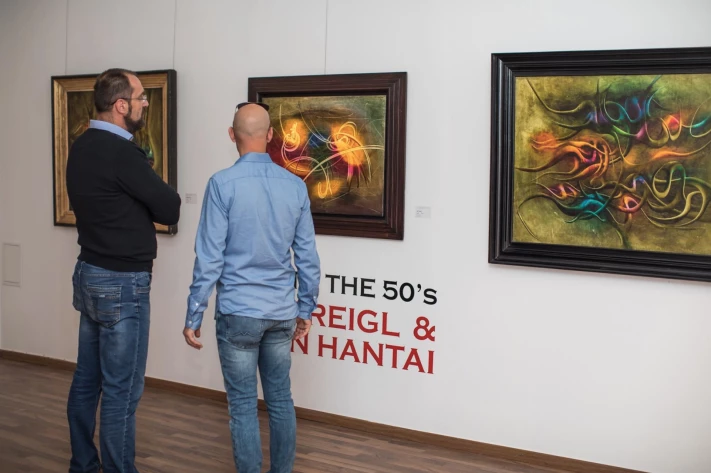Man, 1969
oil on canvas, 236 x 206 cm
1966–1972 | Man
In the painting oeuvre of Judit Reigl, it is in 1966 when the figure returns at first, indicating the overture of a new cycle. In the series entitled Homme (Man), we are confronted with floating human bodies, body parts and aerodynamic torsos depicted vertically in yellow, red and blue, on monumental white or black grounds. “From February 1966, this same writing transformed itself independently of my will, or even against it, into a more and more anthropomorphic figure, a human torso. At first imperceptibly, then more and more consciously after 1970, I tried to intervene, to underline the emerging aspect of these erect bodies” – says Judit Reigl about this series in 1973.
According to Ágnes Berecz, the violent rawness and brutality, and, at the same time, fragility and vulnerability of the naked bodies undermines late- modernist conventions of painting and gender, while the sight and the palpable presence of the mutilated humans, regardless of their sex, stirs the viewers’ emotions. In Reigl’s painting, in her relentless wrestling with bodies, female and male, the self and the other always co-exist, interrelated and interdependent. Since the body is bi-gendered, its image, even when fragmented, nevertheless maintains a certain sense of wholeness.
1966−1972 | Ember
Reigl Judit festészetében 1966-ban tér vissza először a figura, ami egyben egy újabb ciklus nyitányát jelzi. Az Homme (Ember) című sorozatban monumentális fehér vagy fekete alapon sárga, piros és kék, függőlegesen ábrázolt lebegő emberi testekkel, testrészletekkel és áramvonalas torzókkal szembesülünk. „1966 februárjától tőlem függetlenül, sőt akaratom ellenére ez az írás egyre inkább emberi alakot kezdett magára ölteni, kialakult benne egy emberi torzó. Eleinte észrevétlenül, majd 1970-től kezdve egyre tudatosabban próbáltam belenyúlni a felegyenesedő testekbe, hangsúlyozva megjelenésük mozzanatát” – mondta 1973- ban erről a sorozatról Reigl Judit.
Berecz Ágnes szerint a meztelen testek agresszív nyersesége és brutalitása, ugyanakkor kiszol- gáltatottsága és törékenysége felforgatja a festészettel és nemmel kapcsolatos késő modern hagyományt, a csonka emberalakok látványa és szinte tapintható jelenléte pedig – az ábrázolt figura nemétől függetlenül – megrendíti a nézőt. A testekkel viaskodó Reigl művészetében a férfi és a női, az én és a másik egymást feltételező kettősségben van jelen. A test képe lehet töredékes, Reigl kezében mégis őrzi egységét, mert kétnemű.


















